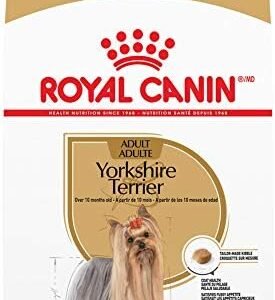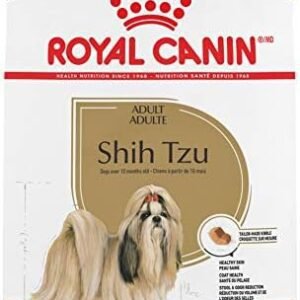Are you in search of an extraordinary canine companion that exudes charm, intelligence, and loyalty? Look no further than the remarkable Briard dog breed. These distinctive canines are more than just pets; they are loving, protective, and incredibly versatile. In this detailed exploration, we’ll uncover the unique characteristics that set the Briard apart from the rest of the canine world.
Table of Contents
What Makes the Briard Breed Unique?
The Briard is a breed steeped in history and known for its exceptional qualities. These dogs have earned a special place in the hearts of dog enthusiasts and have a range of attributes that make them unique.
Selecting the Right Breed for Your Lifestyle
The decision to welcome a dog into your life is a significant one, and it’s essential to choose the right breed that aligns with your lifestyle and preferences. The breed you select will have a profound impact on the dynamics of your relationship and your dog’s well-being. Understanding a breed’s characteristics is paramount, as it can influence their behavior, needs, and compatibility with your household.
The Briard at a Glance
Here’s a table summarizing the unique characteristics of the Briard dog:
| Characteristic | Details |
|---|---|
| Origin | France |
| Coat Type | Long, slightly wavy, with a natural water-resistant quality |
| Coat Colors | Black, fawn, or gray |
| Size | Medium to large; males: 23-27 inches, females: 22-25.5 inches |
| Weight | 55-100 pounds |
| Lifespan | 10-12 years |
| Temperament | Loyal, intelligent, protective, affectionate, and independent |
| Intelligence | Highly intelligent and trainable, excels in herding and obedience |
| Exercise Needs | High; requires regular physical and mental stimulation |
| Grooming Needs | Regular grooming needed due to long coat; brushing 2-3 times per week |
| Shedding | Low; hypoallergenic to some extent |
| Good with Children | Yes; generally gentle and protective |
| Good with Other Pets | Can coexist well if socialized early |
| Training Difficulty | Moderate; responds well to consistent, positive reinforcement |
| Special Skills | Herding, guarding, and search-and-rescue work |
| Common Health Issues | Hip dysplasia, progressive retinal atrophy (PRA), and bloat |
| Unique Feature | Double dewclaws on hind legs (a breed standard) |
| Behavioral Traits | Can be wary of strangers, but deeply bonded with family |
| Adaptability | Adapts well to different environments, though thrives in homes with space to roam |
| Energy Level | High; requires active play and structured activities like agility training |
This comprehensive table provides essential information about the Briard breed. It’s important to note that while some specific data, such as height, weight, and life span, may not be known, the breed’s unique characteristics and suitability for families, their temperament, and exercise needs, are well-established.
The Briard’s Remarkable History and Origin

To truly understand the essence of the Briard breed, one must embark on a journey back in time to explore its rich history and remarkable origin. The Briard, a breed known for its versatility and unwavering loyalty, has roots that run deep, woven into the fabric of medieval France.
Exploring Their Roots
The Briard’s story begins in the pastoral landscapes of medieval France, where these dogs played an integral role in herding and protecting livestock. While the specific historical records may be scarce, the Briard’s development is intertwined with other breeds that were cherished for their herding abilities.
Notable Traits
What sets the Briard apart in the annals of dog history are the remarkable traits that have been passed down through generations.
Double-Coated Beauty: One of the most distinctive features of the Briard is its double coat, which consists of a coarse outer layer and a soft, dense undercoat. This luxurious coat is both protective and visually striking. The Briard’s coat can be black, tawny, gray, or a mix of these colors.
Soulful Eyes: When you meet a Briard, it’s impossible not to be captivated by their soulful eyes. These expressive, almond-shaped eyes are not only a window to their intelligence but also a testament to their gentle nature.
Versatility Unleashed: The Briard is a jack-of-all-trades among dog breeds. Beyond herding, they have excelled in obedience, search and rescue, and as therapy dogs. This versatility is a testament to their intelligence, adaptability, and willingness to work.
Loyal and Protective: The Briard is renowned for its loyalty and protective instincts. These dogs form strong bonds with their families, and their devotion knows no bounds. They are often referred to as “heart wrapped in fur” due to their caring and affectionate nature.
Relevance of Origin
Understanding the historical context of the Briard’s origin is integral to appreciating the breed’s characteristics today. France, with its rolling farmlands and pastoral traditions, has played a pivotal role in shaping the Briard we know and love.
The Briard’s origin in France is more than a historical footnote; it’s a living legacy. The breed’s heritage as a herding and farm dog remains relevant today. Their intelligence, protective instincts, and versatility are traits that continue to serve them well, whether as a working dog or a beloved family pet
Understanding the Briard Breed’s Traits
In this section, we’ll delve into the distinct traits of the Briard breed, including their physical characteristics, temperament, environmental needs, and common behavioral traits. Understanding these aspects is vital when considering the Briard as your potential canine companion.
Physical Characteristics
Size:
The Briard is a large and imposing breed. Males typically stand between 23 to 27 inches (58 to 69 cm) at the shoulder, while females are slightly smaller, ranging from 22 to 25.5 inches (56 to 65 cm). In terms of weight, you can expect a male Briard to weigh between 75 to 100 pounds (34 to 45 kg), and females to weigh between 50 to 65 pounds (23 to 29.5 kg).
Coat Type:
One of the most iconic features of the Briard is its long, double coat. The outer coat is coarse and slightly wavy, while the undercoat is soft and dense. This unique coat serves to protect the Briard in various weather conditions. The coat colors can be black, tawny, gray, or a mix of these colors. Their coat requires regular grooming to prevent matting.
Distinguishing Features:
Briards have a distinctive, powerful presence with a square-shaped body. Their head is flat and broad, with bushy eyebrows that lend them an expressive and intelligent look. Their eyes are dark and almond-shaped, reflecting their gentle temperament. Additionally, their ears are set high and often cropped or left natural, with a slightly raised tip.
Temperament Overview
Suitability as Family Pets:
Briards are well-known for their suitability as family pets. Their loyalty and protective instincts make them wonderful companions, especially in households with children. They form strong bonds with their families and are often referred to as “heart wrapped in fur” due to their caring and affectionate nature.
Compatibility with Other Pets:
With proper socialization from an early age, Briards can be compatible with other pets, including other dogs. Their protective nature may lead them to be wary of strangers, which can be positively channeled through training. They tend to be gentle and tolerant, making them safe around children and other animals when appropriately introduced.
Environmental Needs
Space and Environment:
Briards are adaptable dogs but do appreciate some space to move around. They can thrive in both urban and rural settings, provided they receive sufficient exercise and mental stimulation. Due to their herding heritage, they enjoy having a yard to explore, but a daily walk and playtime are also essential for their well-being.
Temperature Tolerance:
The Briard’s thick double coat provides insulation from both heat and cold. They can tolerate a range of temperatures, but it’s essential to provide them with shelter and water during extreme weather conditions. In hot weather, avoid excessive exercise during the hottest parts of the day to prevent overheating.
Common Behavioral Traits
Positive Traits:
- Loyalty: Briards are known for their unwavering loyalty to their families, and their protective instincts make them excellent guard dogs.
- Intelligence: These dogs are highly intelligent and quick learners. They thrive on mental stimulation and excel in various canine activities and sports.
- Adaptability: Their versatility extends to various roles, including herding, obedience, search and rescue, and therapy work.
- Affectionate: Briards form strong bonds with their families and are loving and affectionate companions.
Challenging Traits:
- Protective Nature: While their protective instincts are a positive trait, it can lead to wariness around strangers if not properly socialized.
- High-Maintenance Coat: The Briard’s long double coat requires regular grooming to prevent matting.
- Exercise Needs: They have moderate to high exercise needs and require daily physical and mental stimulation to prevent boredom and potential behavioral issues.
Popularity and Recognition

In this section, we’ll explore the popularity and recognition of the Briard breed, including its current status in terms of popularity, recognition by kennel clubs and breed organizations, and any notable breed varieties or subtypes that may exist.
Current Popularity
Trends in Ownership:
The popularity of the Briard breed has seen its share of ups and downs over the years. At various times, they have experienced surges in popularity, often linked to cultural trends and media exposure. However, the Briard remains a relatively rare breed compared to more common choices.
In recent years, there has been a resurgence of interest in the breed as people seek unique and versatile canine companions. Their loyal and protective nature, combined with their intelligence and adaptability, makes them attractive to families and individuals looking for a distinctive pet.
While exact statistics on ownership trends can vary by region, Briards have seen an increase in popularity, driven by their suitability for various roles, including family pets, therapy dogs, and herding work.
Breed Recognition
Kennel Clubs and Breed Organizations:
The Briard has gained recognition from several prominent kennel clubs and breed organizations. These organizations play a crucial role in establishing breed standards, promoting responsible breeding, and maintaining the breed’s integrity.
- American Kennel Club (AKC): The Briard was officially recognized by the AKC in 1928. The AKC provides breed standards and guidelines for breeders, as well as opportunities for Briard owners to participate in various events and dog sports.
- The Kennel Club (UK): In the United Kingdom, the Briard is recognized by The Kennel Club. This recognition ensures that the breed adheres to established standards of appearance and behavior.
- Fédération Cynologique Internationale (FCI): The FCI, the international canine organization, also recognizes the Briard. This recognition helps maintain consistency in breed standards worldwide.
Notable Breed Varieties or Subtypes
While the Briard is generally recognized as a single breed, there may be distinctions in appearance or traits among individual dogs. These variations can arise from differences in breeding practices, regional influences, or specific breeding objectives. Some of these variations or subtypes include:
- American Briard: American breeders may focus on specific traits or bloodlines, which can result in subtle variations in appearance or temperament. American Briards are often well-suited for various roles, including therapy work and obedience.
- French Briard: Briards in their country of origin, France, may adhere more closely to traditional standards. French Briards are often celebrated for their herding abilities and remain closely associated with their historical roles on farms.
- Show vs. Working Briards: In some cases, breeders may distinguish between show-quality and working-quality Briards. Show dogs are bred with an emphasis on conforming to breed standards, while working Briards may prioritize traits related to herding or other functional roles.
It’s essential to note that regardless of any subtle variations within the breed, the fundamental qualities of loyalty, protectiveness, intelligence, and versatility are inherent in all Briards. The variety or subtype you choose should align with your specific needs and preferences
Health Considerations and Care
In this section, we’ll explore the health considerations and care requirements for the Briard breed. Understanding the common health issues they may be prone to, as well as tips for promoting a longer and healthier life, is essential for any prospective or current Briard owner.
Common Health Issues
Like all dog breeds, Briards are susceptible to specific health issues. While they are generally healthy dogs, it’s crucial to be aware of potential conditions that can affect them. Regular veterinary check-ups, a healthy diet, and proper care can help mitigate these risks. Some common health issues in the Briard breed include:
| Condition | Description | Prevention/Management |
|---|---|---|
| Hip Dysplasia | Genetic condition where the hip joint doesn’t develop properly, causing pain and arthritis. | Responsible breeding practices, maintaining a healthy weight, and joint supplements. |
| Progressive Retinal Atrophy (PRA) | Inherited condition leading to vision loss and eventual blindness. | Regular eye exams and genetic testing before breeding. |
| Bloat (Gastric Torsion) | Life-threatening condition where the stomach fills with gas and twists on itself. | Avoid large meals before exercise, feed smaller meals, and consider preventive gastropexy surgery. |
| Hypothyroidism | Hormonal imbalance leading to weight gain, lethargy, and skin issues. | Regular thyroid function tests and medication to manage hormone levels. |
| Ear Infections | Moisture in floppy ears can lead to bacterial or fungal infections. | Regular ear cleaning and drying, particularly after swimming or baths. |
| Cataracts | Cloudiness in the eye lens causing impaired vision. | Routine eye exams; surgery may be an option if vision is significantly affected. |
| Cancer | Increased risk of various types of cancer as in other large breeds. | Regular veterinary check-ups and prompt attention to unusual lumps or symptoms. |
| Heart Disease | Conditions affecting the heart, potentially leading to reduced lifespan or quality of life. | Regular cardiac check-ups and monitoring for symptoms like coughing, lethargy, or difficulty breathing. |
It’s essential for Briard owners to work closely with a veterinarian who is familiar with the breed and its specific health considerations. Routine check-ups, vaccinations, and preventive care are key to keeping your Briard healthy and happy.
Lifespan and Longevity
The average lifespan of a Briard typically ranges between 10 to 12 years, with proper care and attention to their health needs. To promote a longer and healthier life for your Briard, consider the following tips:
1. Quality Nutrition:
Ensure your Briard receives a well-balanced diet appropriate for their age, size, and activity level. High-quality dog food, whether commercially prepared or homemade, can contribute to their overall health.
2. Regular Exercise:
Briards are an energetic breed and require daily exercise to stay in shape, both physically and mentally. Engage in activities like long walks, playtime, and even herding or dog sports if available. Mental stimulation is as important as physical exercise.
3. Preventative Healthcare:
Schedule regular check-ups with your veterinarian. Early detection and prevention of health issues are crucial. Ensure your Briard is up to date on vaccinations, parasite control, and dental care.
4. Grooming:
Due to their long, double coat, Briards require regular grooming. Brushing their coat at least a few times a week helps prevent matting. This is also an opportunity to check for any skin issues.
5. Socialization and Training:
Socialize your Briard from a young age to ensure they are comfortable around strangers and other animals. Additionally, consistent and positive reinforcement-based training is essential for a well-behaved companion.
6. Love and Companionship:
Briards are known for their loyalty and affection. Spend quality time with your dog, as they thrive on companionship. Ensure they are part of your family’s activities and receive the attention they crave.
7. Safety and Supervision:
Be cautious with their herding instincts. Supervise interactions with small children and other pets to ensure everyone’s safety.
8. Provide Mental Stimulation:
Keep your Briard’s mind engaged with puzzle toys, obedience training, and interactive games. Mental stimulation is essential for their intelligence.
By following these guidelines, you can help ensure your Briard lives a long and healthy life. Regular veterinary care and attentive, loving guardianship play a significant role in their well-being.
Feeding Your Briard
The Briard is a beautiful and unique breed with specific dietary needs that should be addressed. In this section, we will delve into the essentials of feeding your Briard, including the type of food, feeding schedule, portion control, and dietary considerations.
Type of Food
Selecting the right type of food for your Briard is critical to their overall health and well-being. You have a few options to consider:
Commercial Dog Food:
Commercial dog food, whether dry kibble or wet canned food, is formulated to meet the nutritional needs of dogs. Look for high-quality brands that list meat as the primary ingredient and are free from fillers and artificial additives.
Homemade Diet:
Some Briard owners prefer to prepare homemade meals for their dogs. If you choose this route, consult with a veterinarian or canine nutritionist to ensure you’re providing a balanced diet. Homemade diets often include a mix of lean meats, vegetables, and grains.
Raw or BARF Diet:
Some owners opt for a raw diet, which includes uncooked meats, bones, and vegetables. It’s essential to be well-informed about the raw feeding method and consult with a veterinarian to ensure it’s done safely.
Feeding Schedule
Establishing a regular feeding schedule is beneficial for your Briard. Most adult Briards do well with two meals per day, one in the morning and one in the evening. Puppies may require more frequent meals.
A consistent feeding schedule helps with housebreaking and makes it easier to monitor your dog’s appetite and health. Be sure to provide fresh water at all times.
Portion Control
Portion control is essential to prevent overfeeding, which can lead to obesity. The appropriate portion size depends on your Briard’s age, size, activity level, and the type of food you’re feeding. It’s advisable to follow the guidelines provided by the food manufacturer or consult with your veterinarian to determine the right portion size.
Keep in mind that Briards are prone to bloat, a potentially life-threatening condition. To reduce the risk of bloat, avoid feeding your Briard immediately before or after vigorous exercise and limit their access to water right after eating. Smaller, more frequent meals can also help prevent bloat.
Dietary Considerations
When feeding your Briard, consider the following dietary considerations:
Protein:
Briards benefit from a diet with a moderate to high protein content, as they are an active breed. Ensure that the protein source is high quality, such as meat, fish, or poultry.
Fat:
Dietary fats are essential for Briards as a source of energy. However, be mindful of the fat content, as overfeeding fat can lead to obesity.
Carbohydrates:
While dogs don’t require carbohydrates in large quantities, a moderate amount of high-quality carbohydrates, such as whole grains and vegetables, can provide essential nutrients.
Avoid Harmful Foods:
Certain human foods can be toxic to dogs. Avoid feeding your Briard foods like chocolate, grapes, raisins, onions, and garlic. These items can be harmful or even deadly to your dog.
Food Allergies:
Some Briards may have food allergies or sensitivities. If your dog experiences skin issues, digestive problems, or other symptoms, consult with your veterinarian to identify potential food allergies.
Special Diets:
If your Briard has specific health issues, your veterinarian may recommend a special diet. For example, dogs with food allergies may need a hypoallergenic diet, while those with kidney problems may require a low-protein diet.
Exercise and Activity
Incorporating a well-rounded exercise and activity plan into your Briard’s daily routine is essential to keeping them physically fit and mentally stimulated. Briards are an active and intelligent breed, and they thrive when engaged in regular exercise. Here are some exercise and activity recommendations tailored to the Briard breed:
1. Daily Walks: Briards benefit from daily walks to meet their exercise needs. A brisk, one-hour walk each day is a great starting point. It’s also an excellent opportunity for them to explore and fulfill their herding instincts.
2. Playtime: Interactive play sessions with toys and games are essential for your Briard’s mental and physical well-being. Engage in activities like fetch, tug-of-war, or hide-and-seek to keep them stimulated.
3. Obedience Training: Briards are highly intelligent and enjoy mental challenges. Incorporate obedience training into their daily routine. Teach them new commands, tricks, or even participate in dog sports like agility or obedience competitions.
4. Herding Activities: If you have access to herding facilities or farm-like environments, consider enrolling your Briard in herding classes or activities. This aligns with their natural instincts and provides a fulfilling outlet for their energy.
5. Socialization: Encourage socialization with other dogs and people. This not only helps your Briard become well-adjusted and friendly but also provides mental stimulation.
6. Agility Training: Briards excel in agility due to their intelligence and agility. Enrolling in agility classes can be both physically and mentally enriching for your dog.
7. Hiking and Outdoor Adventures: If you enjoy outdoor activities like hiking, your Briard will likely be an enthusiastic companion. Be sure to provide them with a sturdy leash and harness for safety during hikes.
8. Water Activities: Some Briards enjoy swimming. If you have access to a safe swimming area, introduce them to water and let them cool off during hot days.
9. Mental Stimulation: Provide puzzle toys, treat-dispensing toys, and other mentally stimulating activities to keep your Briard’s mind engaged.
10. Supervised Play with Other Dogs: Briards generally get along well with other dogs. Organized playdates with other well-behaved dogs can provide valuable socialization and exercise.
11. Long Leash Walks: In addition to regular walks, occasional long leash walks in safe, open areas can allow your Briard to explore and run more freely while still under control.
12. Biking or Jogging: For owners who enjoy biking or jogging, your Briard can be trained to accompany you. It’s a great way to provide them with vigorous exercise, but ensure they’re in good physical condition and gradually build up their endurance.
Remember that while Briards have high exercise needs, it’s essential to strike a balance to prevent overexertion, particularly in hot weather. Pay attention to your dog’s cues, and always have fresh water available during and after exercise.
The specific amount and type of exercise can vary depending on your Briard’s age and individual preferences. It’s also crucial to tailor their exercise regimen to their physical condition, which may change as they age. Always consult with your veterinarian to ensure that your Briard’s exercise plan aligns with their health and well-being.
By incorporating these exercise and activity recommendations into your Briard’s routine, you’ll help ensure that they remain physically and mentally fit, happy, and content.
Nutrition and Feeding Guidelines for Briards
Proper nutrition is fundamental to your Briard’s health and well-being. Understanding their dietary needs, portion control, and feeding schedule is crucial for providing the best care to your canine companion. In this section, we’ll delve into nutrition and feeding guidelines specific to Briards, including age-appropriate considerations and potential dietary restrictions.
General Nutritional Needs
Briards, as an active and versatile breed, have specific nutritional requirements. Here are some essential considerations for their diet:
Protein:
Protein is a fundamental component of your Briard’s diet, as it supports their active lifestyle. Look for high-quality protein sources such as meat, fish, and poultry. Adult Briards typically require around 18-25% protein in their diet.
Fat:
Dietary fat is an important source of energy for your Briard. However, it’s vital to manage fat intake to prevent obesity, a common concern in this breed. A diet consisting of 8-15% fat content is generally suitable for adult Briards.
Carbohydrates:
While dogs primarily thrive on protein and fat, including a moderate amount of high-quality carbohydrates in their diet can provide essential nutrients. Whole grains and vegetables can be valuable carbohydrate sources for Briards.
Essential Nutrients:
Your Briard’s diet should be well-balanced and provide essential nutrients such as vitamins and minerals. Look for dog food that meets the nutritional standards established by organizations like the Association of American Feed Control Officials (AAFCO).
Age-Appropriate Considerations
Puppies:
Briard puppies have different nutritional needs than adults. They require a diet that supports their growth and development. Puppy food is specially formulated to provide the necessary nutrients. Feed your Briard puppy according to the manufacturer’s guidelines, and consult your veterinarian for personalized advice.
Adults:
Adult Briards should transition to an adult dog food formula. Ensure that the protein and fat content aligns with their activity level, maintaining a lean and healthy body condition. The recommended feeding schedule is two meals per day.
Seniors:
As Briards age, their metabolism may slow down, and they may become less active. Consider transitioning to a senior dog food formula to meet their changing needs. Adjust portion sizes to prevent weight gain and monitor their overall health closely.
Dietary Restrictions and Allergies
While Briards are generally healthy dogs, like all breeds, they may have dietary restrictions or allergies. Common allergens for dogs include ingredients like chicken, beef, wheat, and soy. If you suspect that your Briard has food sensitivities or allergies, consult with your veterinarian to determine the best approach.
Feeding Schedule and Portion Control
Establishing a consistent feeding schedule and practicing portion control are essential for your Briard’s health and well-being. Here are some guidelines:
- Feeding Schedule: Most adult Briards thrive on a feeding schedule of two meals per day, one in the morning and one in the evening. Puppies may require more frequent meals.
- Portion Control: The appropriate portion size varies depending on your Briard’s age, size, and activity level. Follow the manufacturer’s guidelines on the dog food packaging or consult your veterinarian for personalized recommendations. Portion control is critical to prevent overfeeding and obesity, a condition to which Briards are prone.
- Bloat Prevention: Bloat, also known as gastric torsion, is a severe and life-threatening condition that can affect Briards. To reduce the risk, avoid feeding your Briard right before or after vigorous exercise. Limit their water intake immediately after eating. Smaller, more frequent meals can also help prevent bloat.
Hydration
In addition to providing a well-balanced diet, always ensure your Briard has access to fresh and clean water. Proper hydration is vital for their overall health and helps with digestion, circulation, and temperature regulation. Monitor their water bowl to make sure it’s consistently filled.
Consult Your Veterinarian
Every Briard is unique, and their nutritional needs can vary. It’s essential to consult with your veterinarian to determine the most suitable diet for your specific dog. Your vet can provide guidance on portion sizes, dietary recommendations, and address any specific health concerns or dietary restrictions.
In conclusion, providing the right nutrition and adhering to a consistent feeding schedule is vital for the health and longevity of your Briard. With proper care and attention to their dietary needs, you can ensure that your beloved Briard remains healthy, active, and happy throughout their life.
Personal Stories and Testimonials
The true essence of the Briard breed can often be best understood through the experiences and stories of those who have shared their lives with these remarkable dogs. In this section, we’ll present real-life stories and testimonials from owners of Briards. They will share their experiences, challenges, and the immense joy that comes with being a part of this unique breed’s world.
Testimonial 1: Sarah’s Journey with Her Loyal Companion
Sarah, a devoted Briard owner, shares her experience:
“My journey with my Briard companion began when I first brought Max home as a puppy. From the very beginning, I was captivated by his expressive eyes and his gentle nature. Max quickly became an integral part of my family.
One of the most striking features of the Briard is their unwavering loyalty. Max is not just a pet; he’s a protector, a friend, and a confidant. He’s always there, watching over my family with a watchful eye. He’s the ‘heart wrapped in fur’ that Briards are often described as.
Training Max has been an incredibly rewarding experience. These dogs are highly intelligent, and their willingness to learn and please their owners is remarkable. We’ve dabbled in obedience training, agility, and even therapy work. Max’s adaptability has allowed us to explore various activities and bond on a deeper level.
As with any breed, there have been challenges. Maintaining Max’s long double coat is high-maintenance, but the bond we share during grooming sessions is priceless. We’ve also had to be diligent in providing regular exercise and mental stimulation to keep him happy and healthy.
The joy and love Max brings to our family far outweigh any challenges. He’s more than a pet; he’s a beloved member of our family. Briards have a way of capturing your heart and never letting go.”
Testimonial 2: Paul’s Experience with His Herding Partner
Paul, a Briard owner with a herding background, shares his story:
I’ve always been passionate about herding dogs and the rich farming traditions of my region. When I decided to add a dog to my life, there was no doubt it had to be a Briard.
My Briard, Sophie, has been an incredible herding partner. Her strong herding instincts, intelligence, and agility make her a valuable asset on our farm. Whether it’s guiding the sheep or keeping an eye on the cattle, Sophie is always up for the challenge.
Training her for herding work has been a fulfilling experience. She’s a quick learner and takes her job seriously. While herding is a central part of her life, Sophie is also a loving and protective companion to my family. Her loyalty knows no bounds, and we’ve shared many adventures together.
One of the highlights of owning a Briard is the sense of heritage that comes with it. Sophie continues to embody the spirit of the original farm dogs that roamed these lands centuries ago. It’s a connection to our past and a bridge to our future.
Owning a Briard is not without its responsibilities. Their exercise needs can be demanding, and herding requires dedication and ongoing training. But the rewards are immeasurable. The bond I share with Sophie, our partnership on the farm, and the connection to my roots make every challenge worthwhile.”
Testimonial 3: Jennifer’s Briard as a Therapy Dog
Jennifer, who owns a Briard with a special role as a therapy dog, shares her story:
“My Briard, Bella, has a unique role in our lives. She’s a therapy dog, and her presence brings comfort and joy to those in need. Bella’s affectionate and caring nature make her the perfect companion for people who are facing challenges.
Training Bella for therapy work was a journey filled with learning and rewards. She had to be well-socialized from an early age to ensure she was comfortable around strangers and other animals. Her intelligence and adaptability made her a quick learner, and she now excels in her role.
Being a therapy dog owner comes with responsibilities, including regular visits to care facilities, hospitals, and schools. Bella’s presence has a profound impact on those she interacts with, and the smiles she brings are priceless.
Bella’s loyalty is unwavering, not only to me but to every person she meets. She’s a testament to the love and compassion that Briards embody. Owning a Briard means sharing that love and making a positive difference in the world.”
These personal stories and testimonials from Briard owners highlight the deep bond and unique qualities that make the Briard breed special. Whether it’s as a loyal family companion, a versatile herding partner, or a therapy dog bringing comfort to others, Briards touch the lives of those who have the privilege of knowing them.
The Cost of Owning a Briard
Owning a Briard comes with various expenses, both upfront costs and ongoing maintenance. It’s important to budget for your dog’s needs to ensure their health, happiness, and well-being. In this section, we’ll break down the costs associated with Briard ownership.
Upfront Costs
1. Purchase or Adoption Fee:
Whether you choose to purchase a Briard from a breeder or adopt from a rescue organization, there will be an initial cost. Prices can vary depending on factors such as pedigree, breeder reputation, and geographic location. Expect to pay anywhere from $1,500 to $3,500 or more for a Briard puppy.
2. Spaying or Neutering:
Unless your dog is already spayed or neutered, you’ll incur additional costs for this procedure. Spaying or neutering typically costs between $200 to $500.
3. Microchipping:
Microchipping is a crucial step in identifying and locating your dog if they ever get lost. The cost for microchipping ranges from $45 to $100.
4. Initial Supplies:
You’ll need to invest in supplies such as a collar, leash, food and water bowls, grooming tools, a crate or bed, and toys. Budget around $100 to $300 for these initial items.
5. Vaccinations and Health Check:
Your Briard will need vaccinations and a health check from a veterinarian. Costs for these initial vet visits can range from $100 to $300.
Ongoing Expenses
1. Food and Treats:
Food costs can vary depending on the quality and brand you choose. Expect to spend around $40 to $70 per month on high-quality dog food. Treats and supplements will be additional costs.
2. Grooming:
Briards have a long, double coat that requires regular grooming. Grooming costs can range from $60 to $100 per session, and you should budget for grooming every 6 to 8 weeks.
3. Health Care:
Regular veterinary check-ups, vaccinations, parasite control, and any necessary medications will contribute to your ongoing expenses. Plan to spend around $500 to $1,000 per year on healthcare.
4. Training and Socialization:
Proper training and socialization are essential for Briards. Consider the cost of puppy classes or training sessions, which can range from $100 to $300 or more.
5. Exercise and Entertainment:
Providing your Briard with mental and physical stimulation is vital. Budget for activities, toys, and enrichment, which can amount to $20 to $50 per month.
6. Insurance:
Pet insurance can help cover unexpected veterinary expenses. Costs vary, but a typical premium for a Briard might be $30 to $60 per month.
7. Miscellaneous Costs:
Miscellaneous expenses, such as licenses, registration, and emergency care, should also be factored into your budget. Plan for an additional $200 to $500 annually.
Remember that these are estimated costs, and the actual expenses can vary depending on your location and the individual needs of your Briard. Being financially prepared for the responsibilities of dog ownership ensures that your Briard receives the care and attention they deserve.
Grooming and Care for Your Briard

Grooming your Briard is an essential part of their care, given their distinctive long double coat and active lifestyle. Proper grooming not only keeps them looking their best but also contributes to their overall health and comfort. In this section, we’ll provide general advice on Briard dog grooming, offer tips for maintaining a happy and healthy dog, and recommend specific accessories and care products tailored to the Briard breed’s needs.
General Grooming Advice
Brushing:
Regular brushing is crucial for a Briard to prevent matting and maintain a healthy coat. The long, shaggy double coat can become tangled, especially around the neck and legs. Use a slicker brush, a pin brush, or a comb to gently remove tangles and loose hair. A grooming table can be helpful for reaching all areas of your Briard’s coat.
Bathing:
Bathing should be done as needed, typically every two to three months. Use a dog-specific shampoo to avoid skin irritation. Ensure you thoroughly rinse your Briard, as soap residue can lead to skin issues. Be gentle while drying your dog with a towel or a low-heat blow dryer.
Ear Cleaning:
Briards have floppy ears, which can trap moisture and lead to ear infections. Regularly clean your Briard’s ears using a dog-specific ear cleaning solution and cotton balls. Avoid using cotton swabs, as they can push debris deeper into the ear canal.
Nail Trimming:
Keep your Briard’s nails trimmed to an appropriate length. Overgrown nails can cause discomfort and affect their gait. If you’re not comfortable doing this yourself, ask a professional groomer or veterinarian for assistance.
Dental Care:
Good oral hygiene is vital for your Briard. Brush their teeth regularly with a dog-specific toothbrush and toothpaste. Dental chews and toys can also help maintain healthy teeth and gums.
Eye Care:
Check your Briard’s eyes for any signs of irritation or discharge. Clean their eyes using a damp cloth, and consult your veterinarian if you notice persistent issues.
Specific Care Products
To help you maintain your Briard’s health and grooming needs, here are some recommended accessories and care products tailored to the breed:
- Slicker Brush: A slicker brush is ideal for removing tangles and loose hair from your Briard’s long coat. Look for one with fine, bent wire bristles.
- Pin Brush: A pin brush can help with general grooming and is useful for brushing out your Briard’s undercoat.
- Grooming Table: A grooming table can provide a stable surface for grooming your Briard, making it easier to reach all areas of their coat.
- Dog-Specific Shampoo: Choose a high-quality dog shampoo that is gentle on your Briard’s skin and coat.
- Ear Cleaning Solution: A dog-specific ear cleaning solution and cotton balls can help maintain your Briard’s ear health.
- Nail Clippers: Invest in good-quality nail clippers or a grinder for trimming your Briard’s nails.
- Toothbrush and Toothpaste: Maintain their oral hygiene with a dog-specific toothbrush and toothpaste.
- Dental Chews: Dental chews or toys can help keep their teeth clean and their gums healthy.
Remember that the bond you build with your Briard during grooming sessions is an essential part of their care. Grooming is an excellent opportunity to strengthen your relationship, so approach it with patience and care.
Choosing and Adopting a Briard Dog Breed
If you’re considering adding a Briard to your family, you’re in for a treat. These remarkable dogs are known for their loyalty, intelligence, and versatility. Whether you’re drawn to their history, distinctive appearance, or their suitability as family pets, adopting a Briard can be a rewarding experience.
Reasons for Adoption
Adopting a Briard is a noble choice for several compelling reasons:
1. Giving a Second Chance:
By adopting a Briard from a rescue or shelter, you are offering a loving home to a dog in need. Many Briards are in search of forever homes due to various circumstances, and adopting one means giving them a second chance at a happy life.
2. Loyalty and Companionship:
Briards are renowned for their loyalty and protective instincts. When you adopt a Briard, you gain a faithful companion who will form a strong bond with your family.
3. Unique Qualities:
Briards possess distinctive qualities that make them stand out in the canine world. Their intelligence, versatility, and adaptability make them excellent partners in various roles, from herding to therapy work.
4. Versatile Canine Companion:
If you’re looking for a dog that can excel in different activities and roles, the Briard fits the bill. They’re great at obedience, herding, and even search and rescue work.
Research and Preparation
Before adopting a Briard, it’s crucial to undertake thorough research and preparation to ensure that the breed aligns with your lifestyle and to provide the best possible home for your new furry friend.
1. Understand Briard-Specific Needs:
Research the Briard breed thoroughly to understand their specific needs, including exercise requirements, grooming demands, and temperament. Ensure that you can meet these needs before adopting.
2. Financial Responsibilities:
Owning a dog comes with financial responsibilities. Consider the costs of food, grooming, veterinary care, training, and other expenses associated with dog ownership. Make sure you have a budget in place to provide for your Briard.
3. Grooming Commitment:
Briards have a high-maintenance double coat that requires regular grooming. If you’re not comfortable with grooming your dog or plan to hire a professional groomer, be prepared for the upkeep involved.
4. Space and Exercise:
Briards are energetic dogs that require ample space to move around. Ensure you have enough room for them to thrive and engage in daily exercise to keep them mentally and physically stimulated.
Adoption Process
When you’re ready to adopt a Briard, you’ll need to navigate the adoption process. Here are the typical steps involved in adopting a Briard from reputable rescues or breed-specific organizations:
1. Research Rescues and Organizations:
Start by researching reputable Briard rescues or breed organizations. Look for organizations with a track record of ethical and responsible adoption practices.
2. Submit an Application:
Once you’ve identified a rescue or organization, you’ll need to fill out an adoption application. This application typically requests information about your home, lifestyle, and experience with dogs.
3. Home Visit:
Many organizations conduct home visits to ensure that your living environment is suitable for a Briard. This is an opportunity for the rescue or organization to assess your home and address any potential concerns.
4. Adoption Fees:
Expect to pay an adoption fee, which varies from one organization to another. This fee helps cover the cost of caring for the dogs in their care, including vaccinations, spaying/neutering, and other medical expenses.
5. Meet the Dogs:
Once your application is approved, you’ll have the chance to meet the available Briards. Spend time with the dogs to see which one is the right fit for your family and lifestyle.
6. Bring Your Briard Home:
After selecting a Briard, you’ll complete the adoption process and bring your new furry family member home. Be prepared to provide love, care, and patience as your Briard adjusts to their new environment.
Breeding and Ethical Considerations
While adopting a Briard is a wonderful choice, it’s also essential to understand the importance of responsible breeding practices. When researching the adoption process, you may come across Briard breeders. If you choose to go this route, it’s crucial to consider the following ethical considerations:
1. Responsible Breeders:
If you opt for a breeder, ensure they are responsible breeders who prioritize the health and well-being of the dogs. Ethical breeders perform health screenings and maintain genetic diversity within the breed.
2. Health Screenings:
Briards can be susceptible to certain health conditions. Responsible breeders conduct health screenings to minimize the risk of genetic disorders and ensure the overall health of the puppies.
3. Genetic Diversity:
Ethical breeders work to maintain genetic diversity within the Briard breed. This helps reduce the risk of inherited health issues and ensures the breed’s long-term vitality.
4. Avoid Puppy Mills:
Avoid purchasing a Briard from puppy mills, which prioritize profit over the well-being of the dogs. Puppy mills often engage in unethical breeding practices and may produce unhealthy puppies.
FAQ
Are Briards good with children?
Yes, Briards are known for their gentle and protective nature, making them excellent companions for children. They tend to form strong bonds with their families, including kids.
Can Briards live in apartments, or do they need a large yard?
While Briards appreciate space to move around, they can adapt to apartment living as long as they receive sufficient exercise and mental stimulation. Regular walks and playtime are essential for their well-being.
Do Briards get along with other pets, like cats or smaller dogs?
With proper socialization from an early age, Briards can be compatible with other pets, including cats and smaller dogs. Their protective nature can be positively channeled through training.
What is the grooming routine for a Briard?
Briards have a high-maintenance coat that requires regular grooming. Brush their coat at least a few times a week to prevent matting. Occasional bathing and trimming are also necessary.
How much exercise do Briards need?
Briards have moderate to high exercise needs. Daily physical and mental stimulation is crucial to prevent boredom and potential behavioral issues. They enjoy activities like long walks and playtime.
Are Briards easy to train?
Yes, Briards are highly intelligent and quick learners. They thrive on mental stimulation and excel in various canine activities and sports. Training them can be a rewarding experience.
What are some potential health issues in Briards?
Common health issues in Briards include hip dysplasia, progressive retinal atrophy (PRA), bloat, hypothyroidism, ear infections, cataracts, cancer, and heart disease. Regular veterinary check-ups are important.
Can Briards be left alone for extended periods?
Briards may not do well when left alone for long hours. They thrive on companionship and may become anxious or exhibit unwanted behaviors if left alone for extended periods.
What is the Briard’s lifespan?
The average lifespan of a Briard typically ranges between 10 to 12 years, with proper care and attention to their health needs.
Do Briards require any special considerations for their herding instincts?
Yes, Briards have herding instincts. It’s essential to supervise their interactions with small children and other pets, as their protective nature may manifest as herding behavior. Providing mental stimulation can also help channel their herding instincts in a positive way.
























